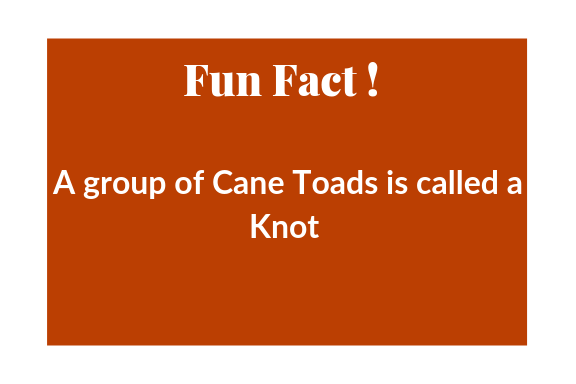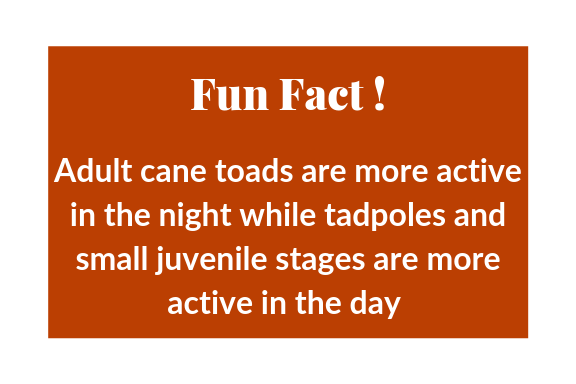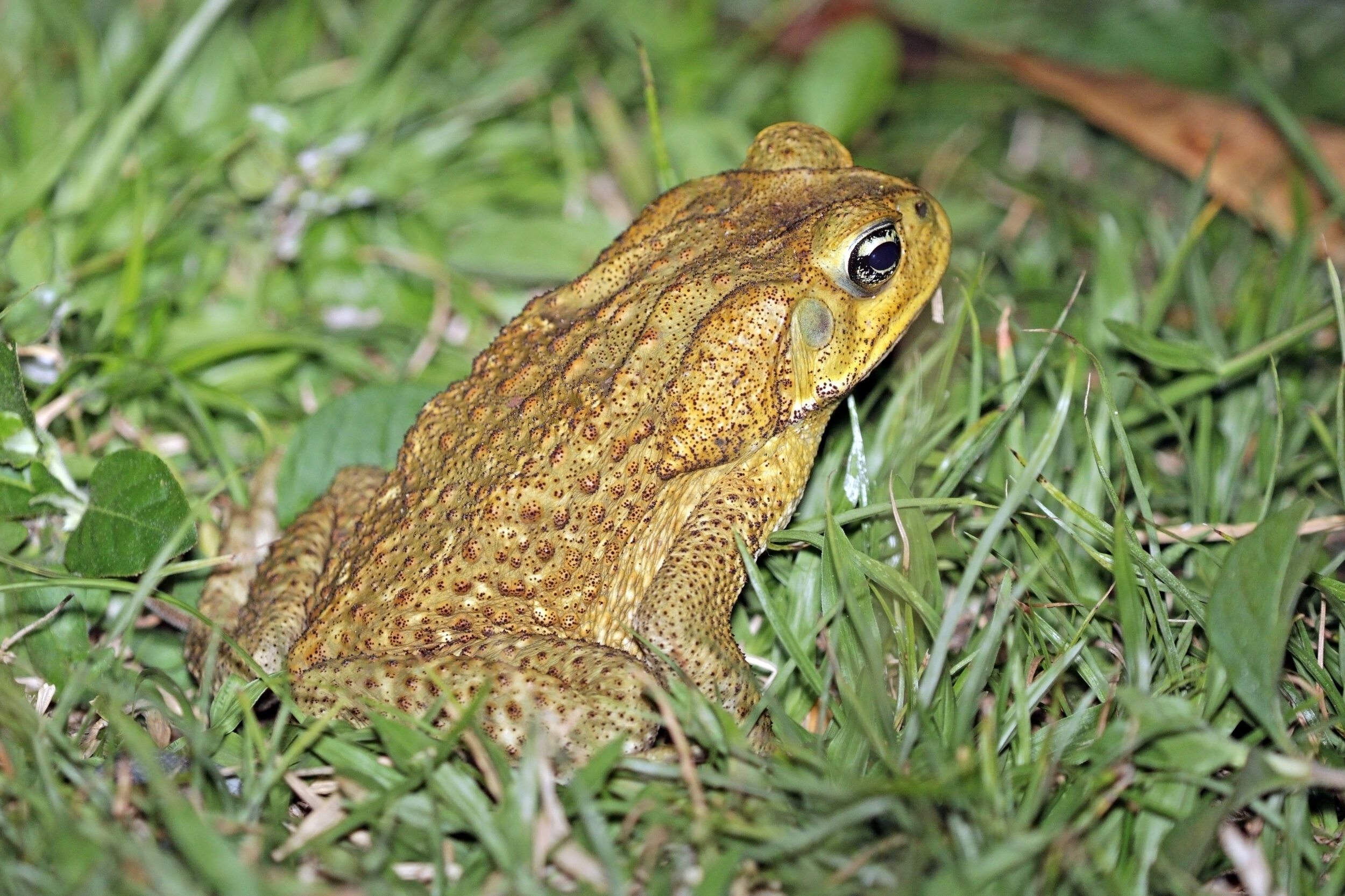Cane Toad
Cane Toad by Charles J. Sharp
Scientific name: Rhinella marina
Conservation Status: Least Concern
Average life span: 5 years
Average size: 12- 15 cm
Eggs: 8,000 - 35,000
Description
Cane toads are large amphibians with short legs and webbing on their hind feet but unwebbed front feet. It has dry warty skin which ranges from yellowish,light brown, reddish brown to dark brown in colour with mottled, pale bellies. They have large swellings just above each shoulder where their paratoid glands are located.
Average Cane toads range from 12 to 15 cm in length with male toads being smaller in size than females.
Range & Habitat
Cane toads are native to the Southern United States, Central and South America.
However, it has been introduced to several countries across the the Caribbean and in the South Pacific to control rats and pests of sugarcane. It was introduced to Jamaica in 1844.
The toad can be found in almost all terrestrial habitats including gardens, ponds, drains,debris, forests and the margin of mangroves.
The Cane Toad is established in the Cockpit Country and the Hellshire Hills.
Cane Toad by Brian Gratwicke
Diet
Cane Toads are opportunistic feeders consuming anything they can catch.
Insects make up the majority of their diet which also includes small mammals, small birds, frogs and lizards. It will also eat pet food that has been left outdoors.
Mating
Cane Toads breed from April to September. A Cane Toad’s mating call sound is a long loud purring thrill.
They reproduce in shallow water and fertilisation occurs externally.
After a successful mating, females can lay 8,000 to 35,000 eggs and can produce two clutches per year. These eggs are hatched between 24-72 hours into shiny black tadpoles.
Less than 0.5 % of Cane Toad eggs are estimated to survive till maturity. Cane Toads reach full maturity after a year.
Toxicity
The Cane Toad and other members of the Bufo genus have a bufotoxin that can can be harmful or even fatal to species that might try to consume it.
The milky white toxin is found all throughout their bodies but is secreted through the parotoid glands found just above their shoulders as a defense mechanism.
The toxin is present in all stages of its life cycle.
Conservation Status
Least Concern
Invasive Species & Cultural Significance
The Cane Toad is an established invasive species in Jamaica. Its introduction resulted in competition and predation between it and our native biota. It is a threat especially to the endemic Jamaican Boa (Yellow Snake), the largest native terrestrial predator on the island.
The introduction of invasive species is believed to have played a vital role in reducing endemic species populations including the Jamaican Boa. Naive species that did not co-evolve with the Cane Toad that do not know to avoid it, may try and eat it and are therefore vulnerable to poisoning. This can end up being fatal.


Sources
cabi. 2010. “Rhinella marina (cane toad).” invasive species compendium Accessed September 10,2019. https://www.cabi.org/isc/datasheet/10333
Cameron, elizabeth. “cane toad.” australian museum. Accessed September 10,2019. https://australianmuseum.net.au/learn/animals/frogs/cane-toad/
Daley, Jason. “Thousands of Invasive Cane Toads Overtake Florida Community” Smithsonian. Accessed September 10,2019
https://www.smithsonianmag.com/smart-news/plague-invasive-cane-toads-overruns-florida-community-180971797/
Global Invasive Species Database (2019) “Species profile: Rhinella marina”. Accessed September 10,2019. http://www.iucngisd.org/gisd/species.php?sc=113
National Geographic. “Cane Toad.”Accessed September 10,2019. https://www.nationalgeographic.com/animals/amphibians/c/cane-toad/
TZIKA,athanasia C., susan koenig, ricardo miller, gerardo garcia, christopher remy and michael c. milinkovitch. 2008. “Population structure of an endemic vulnerable species, the Jamaican boa (Epicrates subflavus).”molecular ecology 17:533-544 doi: 10.1111/j.1365-294X.2007.03588.x
Wilson, Byron S., susan e. koenig, Rick Van Veen, erica miersma and d. craig rudolph. 2011. “Cane toads a threat to West Indian wildlife: mortality of Jamaican boas attributable to toad ingestion.” biological invasions 13:55-60 DOI 10.1007/s10530-010-9787-7
Windsor Research Centre.2016 “Jamaican amphibians” Accessed September 10,2019. https://www.cockpitcountry.com/AmphibianChecklist.html
Rhinella marina

